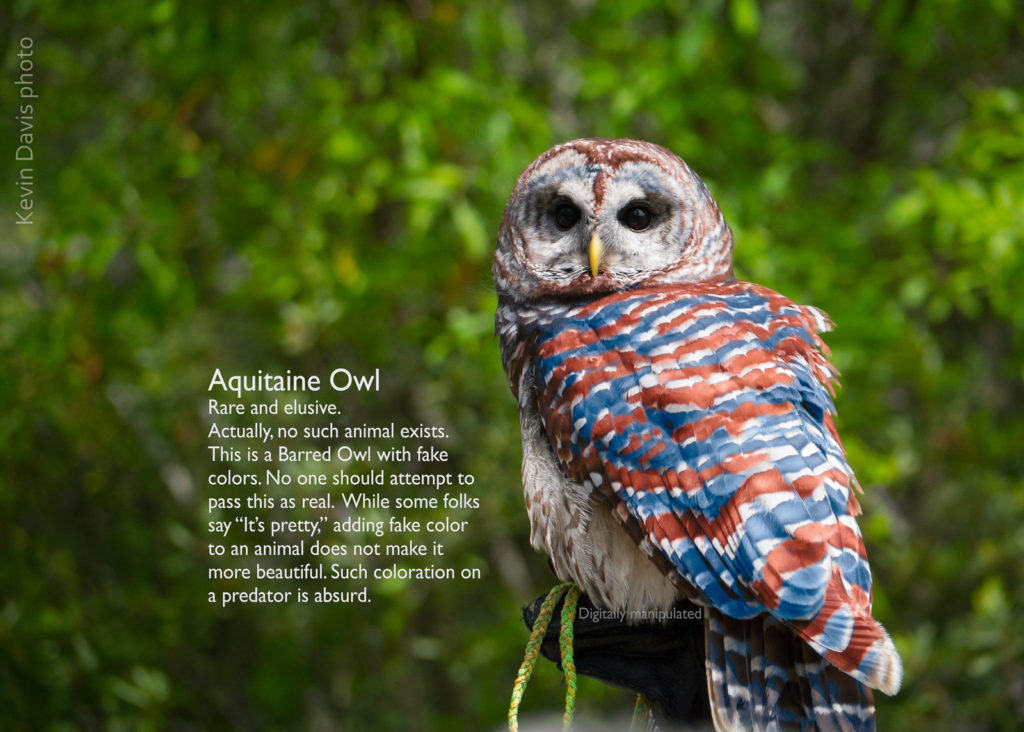Every year, I see some images shared online that viewers believe to be real but are digital creations that are not real. In many cases, the digital artist wasn’t trying to fool anyone but the image is shared without stating that it is digital art.
A friend showed me a “photo” that impressed him … reported to be a blue whale passing under a cable-stay bridge. As the length of the whale was similar to the length of the bridge, I did not believe it and suggested this was not a real photo. My friend seemed offended and asked “why would you question this photo?” Even the largest whale on earth simply isn’t that big. Later looking up details online, an adult blue whale may grow to a length of 100 feet. The bridge in the photo is the Samuel De Champlain Bridge and the section of the bridge in the image amounts to a length of approximately 1800 feet.

On several occasions, friends have share photos online of a bright red owl, sometimes identified as a Madagascar Red Owl. Commonly people believe they are sharing a real “photo” and are stunned by the beauty of the bird. The immediate problem is that owls are birds of prey and will not be highly visible to their prey; an owl should blend into its environment. To this point, at least seven years ago, I modified one of my own images and declared it to be an Aquitane Owl with blatant caption explaining that the coloring isn’t real and should never be misrepresented as real.
Some tropical birds are brightly colored; as a general rule, owls are not.
I have seen a few images that raised doubts, but a little research told me that the colors are not untrue, but perhaps digitally amplified. For example a black leopard with distinctive spots (not entirely black). And then there is a brown zorse (zebra horse) – apparently completely real.